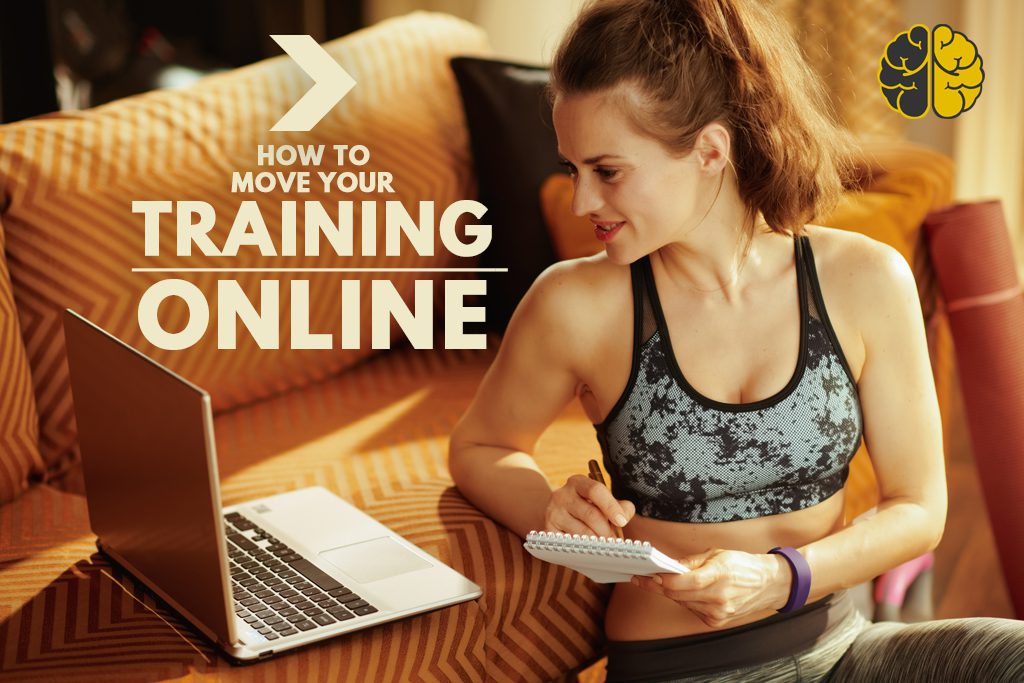I’m going to tell you how to start online training.
If you’re in Growth Phase at Two-Brain, open your Growth ToolKit and go to Revenue Diversity, Milestone 10. (Need help? Ask your mentor.)
If you’re in the Incubator, we’ll teach you how to sell online training step by step in Growth Phase. But for now: If your gym is in danger of being shut down, you can offer to coach people online. This could even create a huge opportunity for you after this crisis ends!
The Free Guide
Download our free guide: How to Add Online Training in 24 Hours.
The Highlights
First, keep taking your No Sweat Intros. Offer people an option to do them over Skype or Zoom.
Second, if people are nervous about attending group classes, offer to deliver their workouts online. Tell them that this is a new premium service, but you’ll provide it at the same price as their monthly membership for now.
For example, our three tiers of online coaching at Catalyst are:
$149 Base
$225 Core
$399 Max
Some gyms in Italy and China that have already been forced to close are delivering workout demos online through WhatsApp. That’s an option too, but make sure you’re in daily 1:1 contact. Mass programming emails or just posting a workout on your website is not valuable enough to justify charging for full membership and more.
The difference is in the amount of accountability we provide. You’re going to provide max accountability.
If clients are doing workouts at home, you have to have 1:1 conversations with them. Don’t just post “today’s workout.” Actually take the time to email each client and say, “Here’s how this will help you.”
You can use the same rationale with multiple clients or the same workout with different rationale.
For example, you could send a 4-round workout of 400-m runs and 50 squats to a competitive sprinter and someone who wants to lose 30 lb.
To the sprinter: “I picked this workout to improve your ability to buffer lactic acid when your heart rate exceeds 165 BPM. Think about your final 100 m while you’re doing it.”
To the weight-loss client: “Today, we’re going to alternate periods of localized fatigue with a more aerobic recovery phase. I want you to be able to metabolize fat during the workout. So do the first run at a jog and note your time at the end. Try to keep that jog time within 20 percent of the first one if you can, but your priority is to do the squats unbroken.”
More variations are possible.
To the new person: “Our goal today is to keep moving. It’s OK to slow down but try not to stop. I’d like you to record your split times each round and send them to me so we can analyze your performance. We’ll pick the next few workouts based on those results.”
To the veteran: “My goal for you today is to see how localized fatigue affects your general performance. Instead of being limited by hitting a high HR, I want to see what happens when lactic acid builds up. So there’s a small mental component here, too. To help, please try to do all of the squats unbroken, hit the first run hard, and keep all your other run times within 20 percent of your fastest time.”
This stuff adds value and relevance, and, in my experience, actually improves performance, too.
I put 31 at-home workouts for you to copy, modify and use on the Two-Brain Coaching blog. You can start there if it helps.

